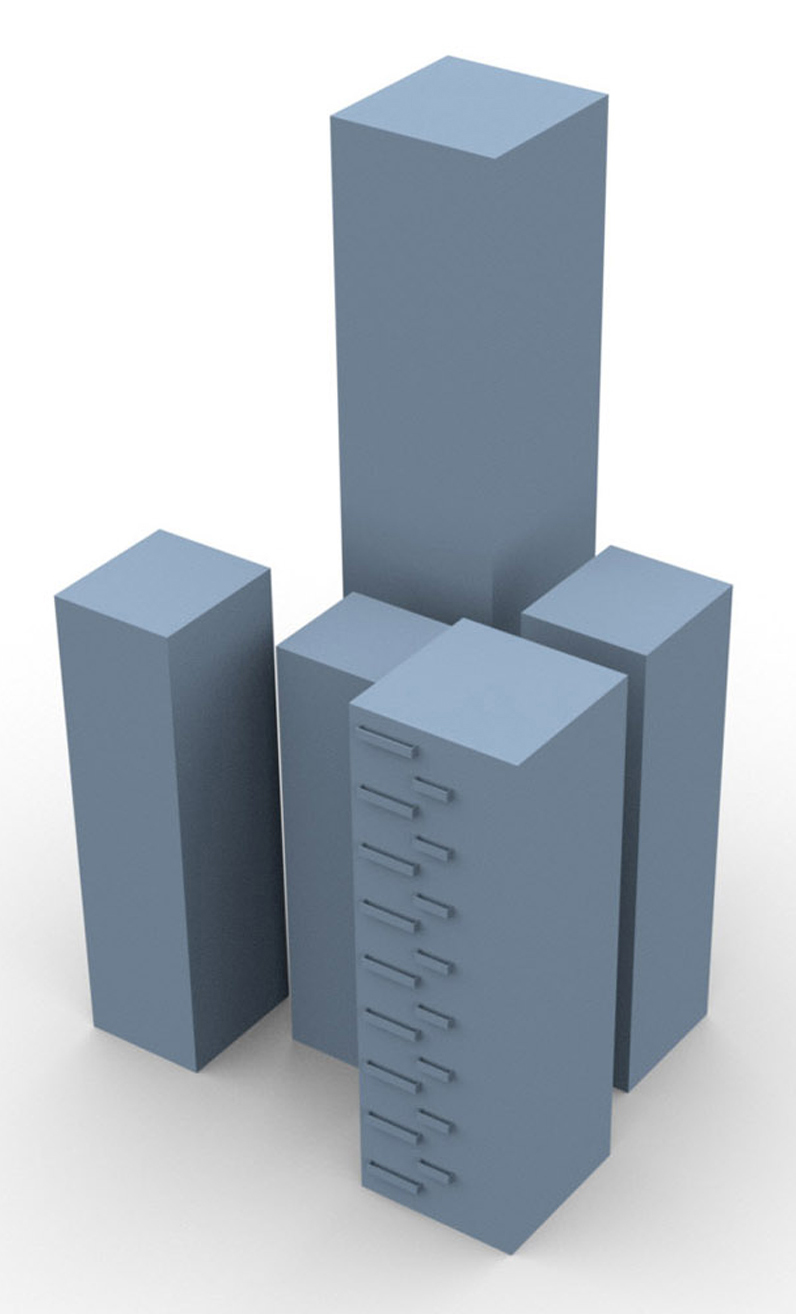Difference between revisions of "Residential"
| Line 42: | Line 42: | ||
=== Economic === |
=== Economic === |
||
Residential areas |
Residential areas accommodate the people who operate in and utilise the economic systems of the urban area. Additionally, residential areas both enhance a communities’ ability to attract new business, and in the same time provide citizens with one of its most basic needs (housing). As a whole, residential land use is the most valuable urban spatial structure due to its great aggregate value and [[causes::Economic impact|economic impact]] for the local economy. |
||
Residential development creates direct construction activity ([[causes::Primary economic impact|primary economic impact]], including planning professionals, attorneys, designers, marketing, landscaping, etc). The [[causes::Secondary economic impact|secondary impact]] of construction generates business for a variety of business types such as lenders, insurance companies, cleaning and window washing services, hardware stores, etc.<ref>Nevada Rural Housing Authority (2005). The Positive Economic Impact of Residential Development. The Proof.</ref>. On the long term residential areas create local jobs, income and taxes due to the consumption generated by residential inhabitants. |
Residential development creates direct construction activity ([[causes::Primary economic impact|primary economic impact]], including planning professionals, attorneys, designers, marketing, landscaping, etc). The [[causes::Secondary economic impact|secondary impact]] of construction generates business for a variety of business types such as lenders, insurance companies, cleaning and window washing services, hardware stores, etc.<ref>Nevada Rural Housing Authority (2005). The Positive Economic Impact of Residential Development. The Proof.</ref>. On the long term residential areas create local jobs, income and taxes due to the consumption generated by residential inhabitants. |
||
Revision as of 15:14, 10 December 2012
Contents
Residential
A residential urban object is a unit which is generally zoned/designated for dwelling purposes and designed to accommodate housing facilities in which people can live.
Description
Residential areas, which are normally zoned as such by the relevant (city authority or municipality) development plan, are typically classified by providing varying amounts of living accommodation for people, with the amount of units and consequently the number of people living within them depending upon the prescribed density. The amount of land zoned for residential development should be in keeping with the projected population growth figures, as set out in regional strategic development documents (such as Regional Planning Guidelines).
Residential building types
Residential development can encompass a wide variety of structures. For the use of this page, we divided this broad spectrum into three archetypes:
| Residence type | Description | Icon |
|---|---|---|
| Housing estates | Housing estates consist of detached, semi-detached and/or terraced housing, typically with some level of private open space associated with each unit. | |
| Housing blocks | A housing block consists of a rectangular layout consisting of connected residential units, often with a private open square contained within it. | |
| High rise housing | High rise housing consists of apartment schemes usually in excess of 6 storey's in height, although apartment schemes of lower height are common. |
These archetypes will never completely fit any specific situation, but are used to present the typical issues associated with these archetypical situations, to enable the reader to decide to what degree it applies to his or hers specific situation.
In the text below, any of these three icons will be used whenever a observation is specific to one or more of the above mentioned archetypes.
Functions
Social
Residential areas will generally consist of accommodation units of a number of different types: apartment schemes (medium to high density), detached or semi detached houses (low to medium density), or terraced housing (medium to high density). The character of a residential area can be heavily influenced by the mixture of tenures (owner occupier, private rental, social housing) which are available within them. All of these factors will have an influence on the security of a residential area (some people who rent property within areas may feel less of a sense of ownership or civic pride for that area).
Economic
Residential areas accommodate the people who operate in and utilise the economic systems of the urban area. Additionally, residential areas both enhance a communities’ ability to attract new business, and in the same time provide citizens with one of its most basic needs (housing). As a whole, residential land use is the most valuable urban spatial structure due to its great aggregate value and economic impact for the local economy.
Residential development creates direct construction activity (primary economic impact, including planning professionals, attorneys, designers, marketing, landscaping, etc). The secondary impact of construction generates business for a variety of business types such as lenders, insurance companies, cleaning and window washing services, hardware stores, etc.[1]. On the long term residential areas create local jobs, income and taxes due to the consumption generated by residential inhabitants.
Mobility
The presence of large numbers of people living within one part of an urban area brings with it a requirement for mobility, in allowing them to move throughout the urban area to take advantage of the various functions on offer within its different parts.
The transportation demand in a network depends on the functions of the different zones in a network. With demand estimation models, the demand can be estimated as the expected number of trips in a certain time period for a certain modality (e.g. car, public transport) between each combination of origin zone and destination zone, depending on the function of the zones. This is also called a trip market. For a residential zone, in the morning there will be many trips going out (e.g. towards work, school), while in the afternoon there will be large demands going into the zone. This should be taken into account for operating traffic management measures or for predicting future/expected traffic flows.
Safety
The safety functions of residential areas are a bi-product of the need to protect the homes and property of the people who live within them.
Security Issues
Burglary, assault, etc.
Burglary is a security issue that is amongst others affected by the population density. Though generally high population density is associated with high rates of assault and burglary, when corrected for the presence of poverty and lack of vegetation, rates of assaults and burglaries are higher in more sparsely populated neighbourhoods. This means that especially high-density neighbourhoods with little vegetation are prone to these issues[2]. Many traditional designed high-rise residential environments ![]() were designed with these qualities, leading to relatively high levels of crime and a tendency for early deterioration.
were designed with these qualities, leading to relatively high levels of crime and a tendency for early deterioration.
Economic dimension of security issues for Residential areas/objects
The most common types of residential security threats (in terms of human intent) are crime related (e.g., domestic burglary, robbery, graffiti, violent crimes, etc.). Crime generates costs in anticipation of crime (e.g. locks, surveillance, etc.), as a consequence of crime (loss of property) and in response to crime (police investigation, legal system, etc.). As a secondary impact, crime has (amongst others) an impact on the local real estate value. This regards not only violent crimes or domestic burglary, but also petty crimes such as graffiti and vandalism.
Measures
Community policing, Alarm systems, etc.
- Surveillance can be effective against mentioned security issues, but can incur high costs if implemented as dedicated observers, either on location or remote. A more natural form of surveillance is surveillance by the inhabitants (also known as 'natural surveillance'). This can be very effective if the right conditions are met, such as adequate surveillability of the environment (from the own home), social cohesion and a sense of ownership. These factors can all be influenced by the structure of the built environment, but have proven to be most challenging to achieve in high-rise housing
 .
.
Economic dimension of security issues for Residential areas/objects
Apart from the more traditional security measures, the ‘designing out’ approach in the earliest stages in the planning process can be an effective measure to prevent security threats and reduce the economical damage, including fear of crime.
Footnotes and references
MAP
<websiteFrame> website=http://securipedia.eu/cool/index.php?concept=Residential width=100% border=0 scroll=auto align=middle </websiteFrame> <headertabs/>


